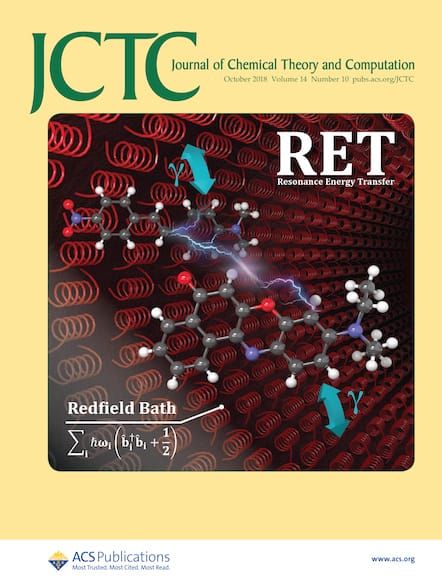A Reliable and Inexpensive Flexible Molecule Crystal Structure Prediction Protocol Based on First Principles.
IF 5.5
1区 化学
Q2 CHEMISTRY, PHYSICAL
引用次数: 0
Abstract
Crystal structure prediction (CSP) methods are of importance for pharmaceutical, electronic, agricultural, and energetic materials. Most CSPs are performed by minimizing lattice energies of quasi-randomly generated polymorphs using either atom-atom force fields (FFs) or dispersion-augmented periodic density functional theory (pDFT+D) calculations. In the former case, the FFs can be of empirical nature or tailor-fitted to results of ab initio calculations. It has been recently shown that intermonomer FFs fitted to symmetry-adapted perturbation theory interaction energies, inter-aiFFs, perform exceedingly well compared to empirical FFs (empFFs) for crystals with rigid monomers. Here, we show that empFF-based CSPs for crystals with flexible monomers are generally not reliable and design a method for developing intramonomer FFs fitted to ab initio calculations for monomers (intra-aiFFs). These were used together with inter-aiFFs in full-dimensional CSPs to predict the crystal structure of 2-acetamido-4,5-dinitrotoluene with 6 soft degrees of freedom. For the 1000 lowest lattice energy polymorphs predicted by such an aiFF-based approach, pDFT+D calculations were performed without optimizations of geometries. Next, the top-ranked 100 polymorphs were fully optimized using pDFT+D. This protocol resulted in the experimental crystal being ranked as number 2 at much lower costs than those of other reliable approaches. Our method of developing intra-aiFFs should also have important implications for biomolecular simulations.一种可靠且廉价的基于第一性原理的柔性分子晶体结构预测方案。
晶体结构预测(CSP)方法对制药、电子、农业和含能材料具有重要意义。大多数csp是通过原子-原子力场(FFs)或色散增强周期密度泛函理论(pDFT+D)计算来最小化准随机生成的多晶体的晶格能量来实现的。在前一种情况下,ff可以是经验性质的,也可以是根据从头计算的结果量身定制的。最近的研究表明,与刚性单体晶体的经验FFs (empFFs)相比,符合对称自适应微扰理论的单体间FFs (intermonmonterofs)表现得非常好。在这里,我们证明了具有柔性单体的晶体的基于empff的csp通常是不可靠的,并设计了一种适合从头计算单体(intra- aiff)的内部分子ff的方法。在全维csp中,将它们与相互作用因子一起用于预测具有6个软自由度的2-乙酰氨基-4,5-二硝基甲苯的晶体结构。对于这种基于aiff的方法预测的1000个最低晶格能量多晶,pDFT+D计算在没有几何优化的情况下进行。接下来,利用pDFT+D对排名前100位的多态性进行充分优化。该方案的结果是实验晶体排名第二,成本远低于其他可靠的方法。我们开发aiff的方法也应该对生物分子模拟具有重要意义。
本文章由计算机程序翻译,如有差异,请以英文原文为准。
求助全文
约1分钟内获得全文
求助全文
来源期刊

Journal of Chemical Theory and Computation
化学-物理:原子、分子和化学物理
CiteScore
9.90
自引率
16.40%
发文量
568
审稿时长
1 months
期刊介绍:
The Journal of Chemical Theory and Computation invites new and original contributions with the understanding that, if accepted, they will not be published elsewhere. Papers reporting new theories, methodology, and/or important applications in quantum electronic structure, molecular dynamics, and statistical mechanics are appropriate for submission to this Journal. Specific topics include advances in or applications of ab initio quantum mechanics, density functional theory, design and properties of new materials, surface science, Monte Carlo simulations, solvation models, QM/MM calculations, biomolecular structure prediction, and molecular dynamics in the broadest sense including gas-phase dynamics, ab initio dynamics, biomolecular dynamics, and protein folding. The Journal does not consider papers that are straightforward applications of known methods including DFT and molecular dynamics. The Journal favors submissions that include advances in theory or methodology with applications to compelling problems.
 求助内容:
求助内容: 应助结果提醒方式:
应助结果提醒方式:


